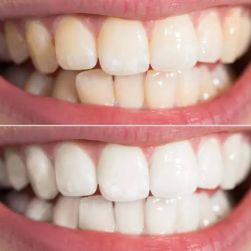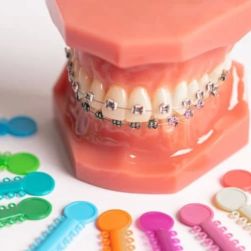How Co-pays and Deductibles Affect Your Dental Care Costs
1. What Are Co-pays and Deductibles in Dental Insurance?
When it comes to dental insurance, many people are confused about the terms "co-pays" and "deductibles." Trust me, I’ve been there myself. A few years ago, I went to the dentist for a routine cleaning, and to my surprise, I had to pay a hefty amount even though I thought my insurance would cover most of it. It was then that I realized I didn’t fully understand how co-pays and deductibles worked. Understanding these terms is crucial for managing your dental expenses, so let’s break it down.
A co-pay is a fixed amount that you pay for a dental service at the time of your visit. For example, if you have a co-pay of $30 for a cleaning, you would pay that amount upfront while the rest of the procedure is covered by your insurance. It’s important to remember that co-pays can vary depending on the type of service you're receiving (e.g., a cleaning, filling, or root canal).
A deductible, on the other hand, is the amount you need to pay out-of-pocket for dental care before your insurance begins to cover the costs. Let’s say your deductible is $200. That means you'll need to pay the first $200 of your dental care each year before your insurance steps in to help cover the rest. Once you've met your deductible, your insurance will typically pay a larger portion of the costs, but you may still be responsible for co-pays and coinsurance.
2. How Do Co-pays and Deductibles Impact Your Total Dental Care Costs?
Co-pays and deductibles can significantly impact how much you pay for dental care over time. If you have a low deductible but higher co-pays, you might end up paying more out-of-pocket during each visit, especially if you need frequent treatments. On the other hand, if your deductible is high, you might be paying less per visit but could end up spending more overall if you need a lot of dental work in a given year.
Let me give you an example: Last year, I had to get a crown after a cavity turned into a much bigger issue. The total cost of the crown was around $1,200. Since my deductible was already met from other procedures, my insurance covered a significant portion of the cost, and I only had to pay the co-pay. Without that coverage, though, I would have been stuck paying a much higher amount. This experience taught me the value of understanding both co-pays and deductibles in dental insurance.
3. What Should You Look for When Choosing a Dental Insurance Plan?
When selecting a dental insurance plan, it's essential to look beyond just the monthly premiums. Sure, a low premium might seem attractive, but it could come with higher co-pays or a higher deductible, making your dental expenses harder to manage. To avoid unexpected costs, take the time to review the details of each plan carefully.
Here are a few things I recommend considering when choosing a dental plan:
3.1 Co-pays for Common Procedures
Co-pays for common dental procedures like exams, cleanings, and fillings can vary between plans. Make sure to compare the co-pays for these services across different insurance plans to get a sense of what you’ll actually pay during your visits.
3.2 Deductibles and How They Work
As we’ve discussed, the deductible is a key factor in determining how much you’ll need to pay before insurance coverage kicks in. It’s worth looking at whether the deductible is annual or if it resets each year. A lower deductible can save you money if you need extensive dental work.
3.3 Coverage for Major Procedures
Most dental insurance plans cover preventive care well, but they may only cover a percentage of major procedures like crowns, bridges, or root canals. You’ll want to make sure your plan offers adequate coverage for these services, especially if you expect to need them in the future.
4. Real-World Example: How Co-pays and Deductibles Affected My Dental Care Costs
Earlier this year, I needed a deep cleaning procedure because my gums were showing signs of periodontal disease. The procedure was a bit more expensive than a regular cleaning, and I was worried about how much my insurance would cover. At the time, I had a plan with a $50 co-pay for cleanings and a $300 deductible. Even though I had to pay the co-pay, the insurance covered most of the treatment after I met my deductible, which was a relief.
But here’s the thing: my deductible hadn’t been met yet for the year. So, I ended up paying the full $300 deductible upfront before the insurance coverage kicked in. That’s an example of how deductibles work: you’re responsible for paying a certain amount each year before your insurance helps you out. Although it seemed like a big payment initially, I felt better knowing that the rest of my dental care for the year would be covered by insurance once I hit that deductible.
5. Tips for Saving on Dental Care Costs
Managing co-pays and deductibles can be tricky, but there are ways to save on your dental care expenses:
5.1 Use Preventive Care to Avoid Bigger Issues
The best way to save on dental care is to avoid expensive procedures altogether. Regular cleanings, exams, and early detection of problems can help you stay on top of your dental health, potentially preventing major issues that require costly treatments down the line.
5.2 Explore Discount Plans or Savings Programs
Some dental offices offer discount plans or in-house savings programs for patients without insurance. These plans often cover basic services at a discounted rate, helping you manage your out-of-pocket expenses. Ask your dentist if they offer any such programs.
5.3 Shop Around for Treatment Costs
If you’re facing a significant procedure like a root canal or dental implant, it’s worth shopping around to compare prices at different dental offices. Prices can vary significantly, even within the same area. Some offices might even offer payment plans or financing options to help you manage costs over time.
6. Conclusion: Understanding Your Dental Insurance Costs
Understanding co-pays and deductibles for dental care is essential for managing your dental expenses and avoiding unexpected costs. By carefully reviewing your dental insurance plan, considering factors like co-pays, deductibles, and coverage for major procedures, you can make informed decisions about your care. Plus, with a little planning and the right strategies, you can save money while maintaining excellent dental health.
If you're still unsure about which plan works best for you, consider checking out our website at [Dentistry Toothtruth] to get expert recommendations for dental clinics, services, and insurance options tailored to your needs.






